In a remote Peruvian village set amidst the highest peaks of South America’s the Andes, Katy finds her “Andean home”
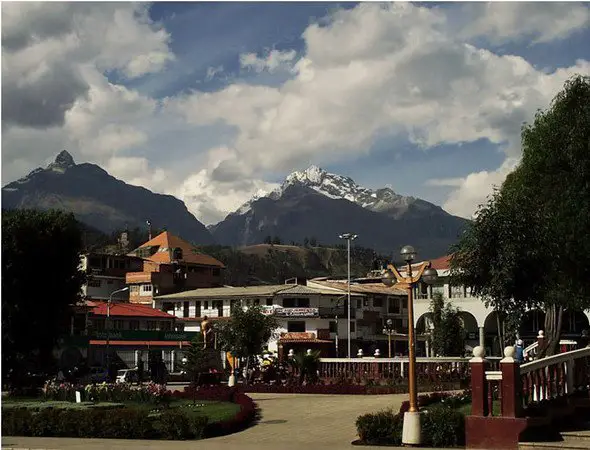
I jumped out of the cab to a cacophony of beeps and shouts and fought my way across the road, yawning in the early-morning cold of Peru in the Peruvian village of Huaraz. I walked into the grey concrete building behind a trail of small children dressed in blue school uniforms and dragging small suitcases decorated with Barbie and Batman images. I climbed the stairs, helping the struggling tots drag up their unwieldy bags.
“Miss Katy!”
I looked up at the balcony above me, where the shout had come from, and saw a gaggle of grinning eight-year-olds hanging over the edge, waving madly at me. Suddenly, I was mobbed on all sides, children chanting my name, trying to get a hold of my hand, asking in rapid Spanish whether I would be teaching them that day. I smiled, ruffled a few heads and disentangled myself, telling them fondly to go to class.
I continued up another set of stairs to the class of nine-year-olds where I was teaching first. Like all of the classrooms in the school, it was sparsely furnished. A tatty map of the world hung on the breeze-block wall and the children were busy unpacking pencil cases and textbooks onto their simple desks. I signalled for them to be quiet and sit down and began introducing the topic of school in English. Some vocabulary practice and a rather rowdy team game later, I left them in high spirits for the math teacher and went to find the four-year-olds, who were learning about family.
So the morning continued, moving from class to class, figuring out ways to teach without resources and without a plan, as I did every day. There were no cards, no crayons, no storybooks, and no play corner. There wasn’t a schedule, a scheme of work or a curriculum to speak of. But we managed, somehow. The children had books to write in and I had a blackboard. It was enough.
AT 12:30pm bells rang; small children swarmed out, teenagers sauntered in and I made my way back out onto the streets of Huaraz, a city in north-central Peru. My work was done until the evening, so I walked back into the center of town. By this time of day, it was swelteringly hot, so I pulled off layers of clothing, down to my T-shirt. Market stalls selling textbooks had set up shop along the roads nearest to the schools by this time and combis, small public vans, veered noisily past, with the ticket seller, usually the teenage son of the driver, announcing the destination in a repeated, lilting shout.
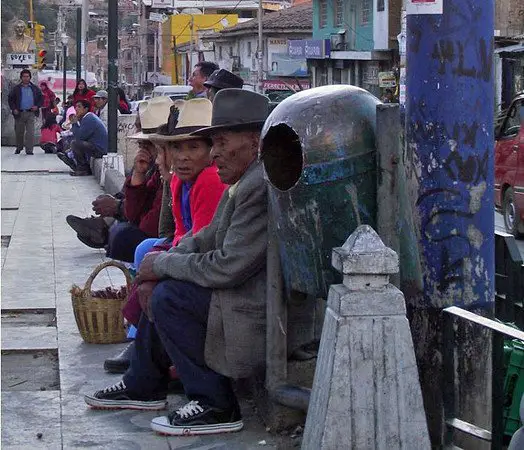
I felt a tug at my hand and looked down to see one of the children I taught running along beside me. She accompanied me for a while, bursting with curiosity and questions. Where did I live? How had I learned English? Where was this place called England? Did I like Huaraz? Then she disappeared with a wave into the central market, where her mother worked making curtains and mending clothes.
I came to the church, where men sat in tiny shop doorways, eating plates of chicken and rice. A pig of some description was roasting on a spit outside, watched over by a Quechua woman dressed traditionally, long hair plaited down her back. She smiled at me with wizened eyes as I passed. I continued, huffing and puffing up the hill, feeling the lack of oxygen that is a fact of life at 10,000 feet. But it was always worth it for the view when I turned, just before reaching the house, and looked at Peru’s magnificent peak of Huascaran; at 22,205 feet, it’s one of the highest mountains in the Andes and although I saw it every day, it still left me awestruck.
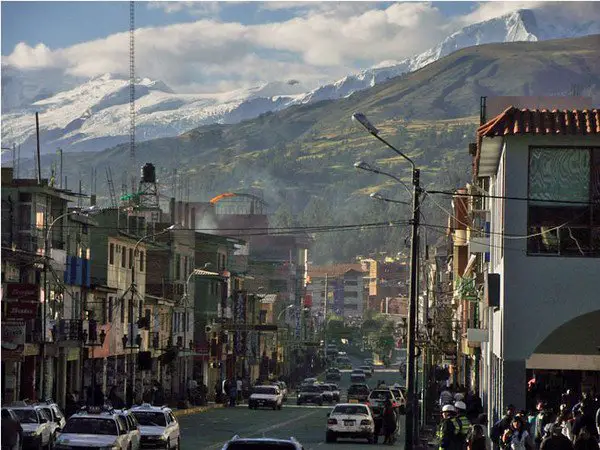
I paused in the shop on the corner to say hello to the shopkeeper. She looked up from her work – apparently dissecting chicken’s feet on the counter.
“Hola gringita! Como estas?” she asked, with her boundless warmth and friendliness. “Would you like a chicken foot?”
I politely refused, paid for my bottle of water and went up to the house. Delicious aromas were coming from the kitchen, where my Peruvian ‘mom’ was doling out potatoes, rice and stew to whomever happened to be around, usually her two children and a handful of volunteers. We gathered round the dining table, adding spicy sauces to our meals and filling mugs with tea and hot water. We ate hungrily, then piled our dishes, cleared the table and dispersed to do whatever we had to that afternoon. I began with a short siesta and changed into a skirt before going to sit on the roof, where I planned the lesson for my evening class with adult students and gazed out at the view, ever-dominated by the snow-capped Huascaran.
Jess, a fellow volunteer appeared on the steps with a deckchair, which she set up beside me.
“Do you want to go somewhere this weekend?” she asked
“How about Chavin?” I asked. “Apparently there’s some incredible pre-Inca ruins there.”
We spent the rest of the afternoon poring over guidebooks, planning our weekend away, before getting ready to walk down to the language center in town where we both taught. The light of day was now fading and orange lights came on across town. We wrapped up in jumpers, scarves, hats and gloves and went out to brave the cold. The daily temperature extremes were still something we were slowly getting used to. We began walking briskly down the hill, greeting the women who were packing up their stalls for the day, pretending to be scared when a group of boys jumped out of the trees.
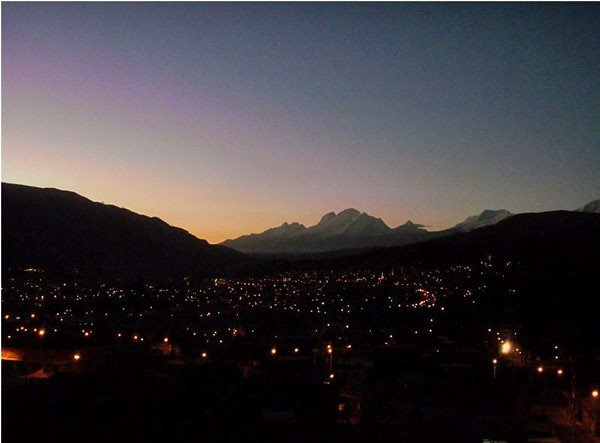
They stood nudging each other and whispering, before one of them came up to us. “Hello, how are you?” he blurted in English and they all ran off, giggling with relief and mischief.
I realized that this small, chaotic, poor Peruvian village, sitting high on the Altiplano, far from anywhere, was becoming familiar. I understood its rhythms and culture, I was getting to know the people. In short, it was becoming, and forever will be my Andean home.
Pin for Later
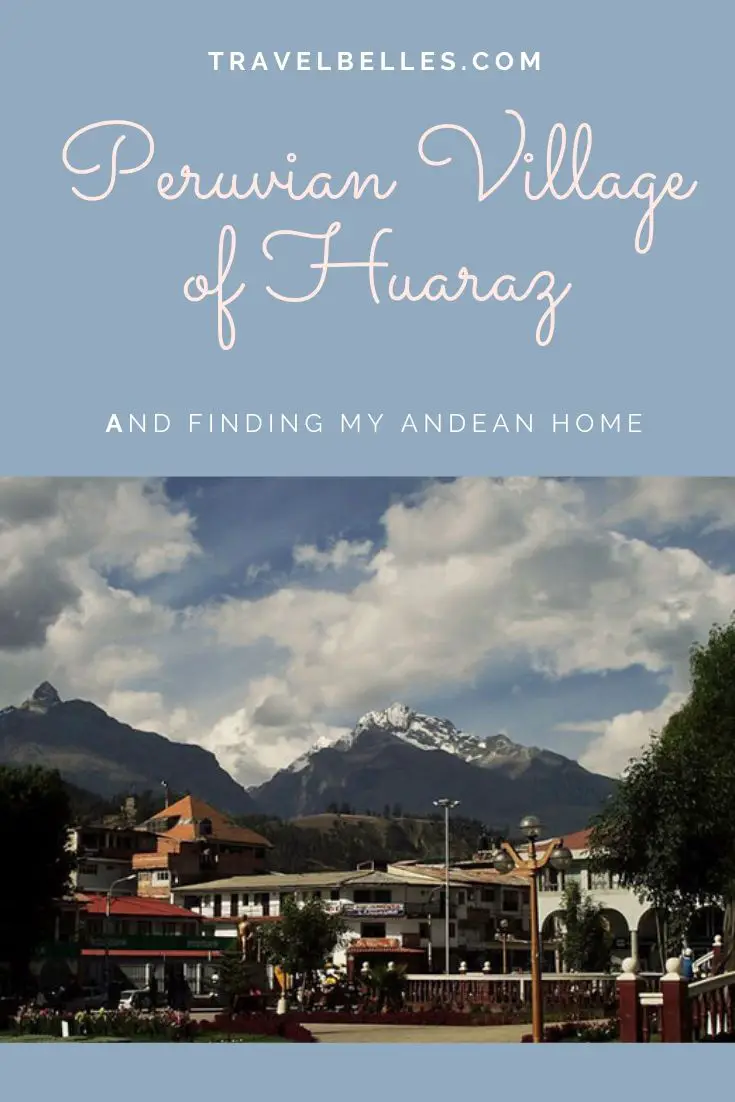
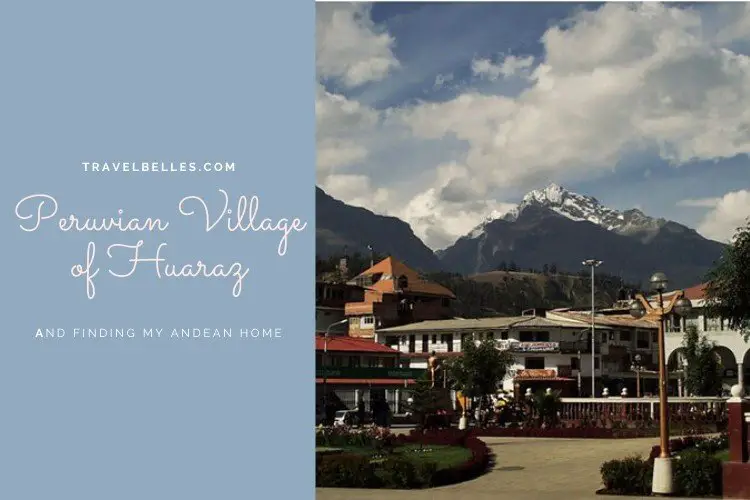
So beautifully written, Katy! I can picture it all. What a lovely place to call your home away from home.
What a beautiful experience. I can only imagine a small town like that becoming “home.”
Thank you Krista! I miss it very much!
I feel so lucky that I couls call a place like that “home” 🙂
I have friends who were up there recently doing Laguna 69 and it looked STUNNING.
This is one place I missed out on when I was in Peru back in early 2010
Looks like a lovely place to call “home”! 🙂
I have come to realize that my favorite travel experiences are the ones where I stay for a while and feel like I understand the place. Great story about how you found that for yourself in Peru.
By the way, I love it how people will call you “gringa” or “gringita” and they really do not mean it in a derogatory way.
Hoping to make it to Huaraz for Semana Santa- I will make sure to check your blog for tips! I live in Piura.
A lovely story, Katy. One of the great things about living abroad is how it re-defines the meaning of “home.” I live in Seville, Spain, and it is amazing how a place that has a different language, culture, social structure, pace and attitude can wrap itself around you with warm familiarity. Thanks for sharing your experiences.
I visited Laguna 69 – it really is! If you ever get the chance to go, take it 🙂
It is kind of out of the way, but worth a trip if you ever go back 🙂
Thanks, it really is!
Mine too, Stephanie!Thank you 🙂 Yes, I really thought I would hate being called a gringa, but when it was said with such affection, I loved it!
I hope you enjoy it, Katie! I didn’t visit the North of Peru, I will have to go sometime!
Thanks Karen 🙂 You’ve described the redefinition of home perfectly! Seville must be a great place to call home!
Better late than never! I am cruising back through Travel Belles and came across your article. It took me straight to this little village in the Andes – your Peruvian home. What an experience!